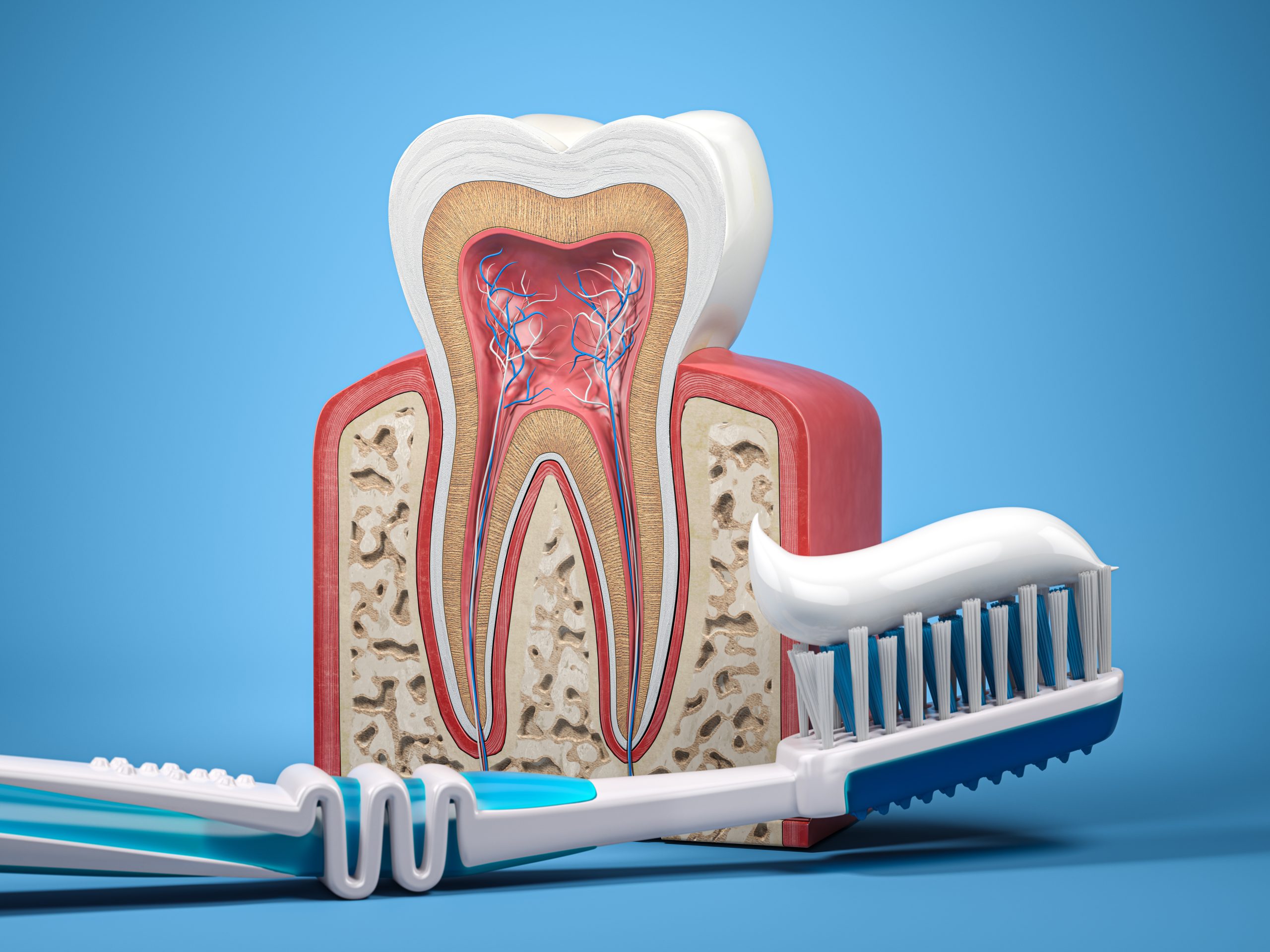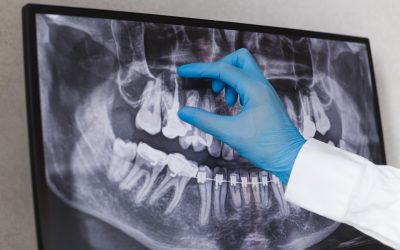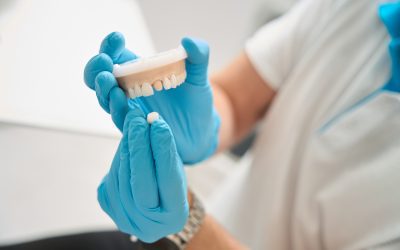The maintenance of good dental hygiene contributes to one's overall health and well-being. The journey to achieve excellent oral health begins with understanding the importance of practicing daily routines and adopting positive habits. You can avoid common issues such as gum disease, tooth decay, and other dental complications by giving adequate attention to your teeth and gums.
A crucial aspect of how to have good dental hygiene is using the right tools and techniques, such as selecting an appropriate toothbrush, toothpaste, and integrating daily flossing into your routine. Additionally, being mindful of your diet and nutrition can significantly impact your oral health. Regular dental checkups are necessary to further maintain and address any concerns that may arise.
Teeth Structure and Function
Teeth play a crucial role in an individual's overall health and well-being. They are essential for various functions such as chewing, biting, speaking, and maintaining proper jaw alignment. This section will briefly discuss the teeth's structure and function.
The human mouth generally contains 32 teeth, each of which falls into one of the four categories: incisors, canines, premolars, and molars.
- Incisors are the eight front teeth (four on the top and four on the bottom) designed to bite and cut food into smaller pieces.
- Canines are the four sharp, pointed teeth next to the incisors, and they are responsible for tearing food.
- Premolars, also known as bicuspids, are the eight teeth found between the canines and molars. They help crush and grind food.
- Molars (12 including the wisdom teeth) are located at the back of the mouth and are specialized for grinding and chewing food.
The crown and root make up the two main parts of a tooth. The crown relates to the visible part of the tooth, while the root relates to the hidden part beneath the gum line.
The tooth's structure comprises four layers: enamel, dentin, cementum, and pulp.
- Enamel is the hard, outermost layer, which protects the tooth from decay and damage.
- Dentin is the second layer, a softer, yellowish tissue that supports the enamel.
- Cementum is a thin layer covering the tooth's root, and it helps anchor the tooth to the jawbone.
- Pulp is the soft tissue in the tooth's center, which contains nerves, blood vessels, and connective tissue.
By understanding teeth's structure and function, individuals can promote good dental hygiene and ensure their teeth remain strong and healthy throughout their lifetime.
Common Oral Health Issues
Poor dental hygiene can result in an array of oral health issues. Some common problems include bad breath, tooth decay and gum disease. By implementing a few basic practices, you can keep your teeth healthy and strong throughout your life.
Bad breath
Halitosis is another way to say bad breath. Some reasons for bad breath are poor oral hygiene, dry mouth, gum disease, and certain foods. The American Dental Association recommends brushing and flossing daily, as well as using mouthwash and tongue cleaners to help alleviate bad breath. Also, eating foods that make you chew creates saliva to keep your mouth moist.
Cavity Prevention and Tooth Decay
Tooth decay is a result of the breakdown of tooth enamel, which can lead to the formation of cavities. It occurs when bacteria in plaque produce acids that attack the tooth's surface. The process of tooth decay can be prevented and even reversed with proper dental hygiene and care for your teeth.
One of the key components in preventing tooth decay is the use of fluoride. Fluoride works by strengthening the tooth's enamel, making it more resistant to acid attacks. Brushing your teeth with a fluoride-containing toothpaste at least twice a day, preferably after each meal and before bedtime, can significantly help in cavity prevention.
In addition to using fluoride toothpaste, maintaining a balanced diet with ample calcium but low in sugary or acidic foods is essential. Calcium strengthens the teeth and helps neutralize the acids formed by bacteria in your mouth, reducing the risk of developing cavities. Foods like cheese, yogurt, and milk are excellent sources of calcium.
Gum Disease and Its Prevention
Gum disease, aka periodontal disease, is a common oral health issue that can range from mild inflammation (gingivitis) to severe infection affecting the bone and other supporting structures of the teeth (periodontitis). Good dental hygiene practices can help prevent both gum disease and its progression.
Gingivitis is caused by plaque buildup, a sticky bacteria film that constantly forms on the teeth. When plaque is left unremoved by proper oral hygiene, it hardens into tartar, which can only be removed by a dental professional. Inflammation and bleeding gums are early signs of gingivitis. At this stage, it is still reversible with proper dental care.
If gingivitis is not taken care of, it can progress to periodontitis. In this stage, the supporting bone and tissues that hold the teeth in place become damaged. Pockets form between the teeth and gums, which can lead to further plaque accumulation and infection. Tooth loss is the ultimate result when periodontitis is not treated promptly.
Oral Hygiene Best Practices
The Importance of a Toothbrush
How to have good dental hygiene? It begins with choosing the right toothbrush and following proper brushing technique. In this section, we'll discuss the different types of toothbrushes, how to take care of your toothbrush, and the most effective brushing techniques.
Toothbrush Types
Manual and powered are the two main types of toothbrushes. Both can be effective at maintaining oral health when used with proper technique. Selecting a toothbrush with soft bristles is recommended since they will be gentle on the gums and teeth. Regardless of the type, toothbrushes should be changed out every three to four months or more often if the bristles are visibly matted or frayed.
Brushing Technique
Proper brushing technique is essential for effective tooth cleaning and maintaining oral health. Follow these steps for a thorough brushing experience:
-
- Use a soft-bristled toothbrush.
- Angle your toothbrush 45 degrees to your gumline.
- Move the toothbrush in small, circular motions across all sides of your teeth, including the outer, inner, and chewing surfaces.
- Brush your tongue gently as well as the roof of your mouth to remove bacteria.
- Brush for at least two minutes twice a day.
Once finished brushing, rinse your toothbrush thoroughly with tap water and let it air dry. Store the toothbrush upright to prevent bacterial growth, and avoid letting toothbrushes touch each other if stored in the same holder. You may run hot water over the bristles before and after each use for additional cleanliness.
The Importance of Toothpaste
Good dental hygiene continues with choosing the right toothpaste. One of the most crucial factors to consider when selecting a toothpaste is its fluoride content. The American Dental Association considers fluoride a vital ingredient in toothpaste, as it's a natural mineral that protects tooth enamel.
Several types of toothpaste are available on the market, including those specifically designed for sensitive teeth, whitening, gum health, and more. It's essential to choose a toothpaste that meets your specific dental needs. If you have sensitive teeth or experience tooth pain often, look for a toothpaste formulated to alleviate sensitivity. Similarly, if you want to brighten your smile or remove stains, a whitening toothpaste might be a suitable choice.
Texture plays an essential role in selecting a toothpaste, too. There are various toothpaste options like paste, gel, and liquid available, and choosing the right one comes down to your personal preference. Pastes and gels tend to cling better to your toothbrush and teeth, making brushing more manageable and more effective. When choosing a toothpaste, you can also look for options that help freshen your breath.
The Importance of Flossing
Flossing daily is another essential aspect of oral hygiene. It helps to eliminate food particles and plaque that remain between the teeth and along the gumline, where the toothbrush cannot reach. Doing this at nighttime is ideal since bacterial activity increases due to less saliva production.
How to Floss Properly
To ensure a thorough cleaning, follow these steps to floss correctly:
-
- Use a comfortable length of floss (about 18 inches) and wrap it around the middle fingers of both hands, leaving a bridge of about 2 inches to work with.
- Hold the floss firm between your thumbs and index fingers and gently glide it back and forth between your teeth.
- Curving the floss around each tooth's base ensures you clean below the gumline. Use an up-and-down motion to clean both sides of each tooth.
- Move to a clean section of floss as you progress through all your teeth. Be gentle and avoid snapping the floss too hard, as this can damage your gums.
- Rinse your mouth with water or mouthwash to flush away any dislodged particles.
You can significantly reduce the buildup of plaque and tartar by incorporating flossing into your daily oral care routine.

The Importance of Mouthwash
Mouthwash, also known as oral rinse, is a liquid used to maintain and enhance oral hygiene. It is an essential addition to daily dental care routine, as it complements the use of toothbrushes, floss, and other dental tools. Mouthwash offers a range of benefits for teeth and gums, ensuring overall oral health.
One of the main benefits of using mouthwash is that it freshens breath by neutralizing odors. Mouthwash comes in various flavors and effectively kills bacteria associated with bad breath, leaving a minty fresh sensation. Additionally, mouthwash helps remove food particles that brushing and flossing may miss, making it an efficient cleaning agent.
There are two main types of mouthwash. Cosmetic mouthwashes primarily serve to mask bad breath temporarily, while therapeutic mouthwashes target specific dental issues. Therapeutic mouthwashes can be purchased over the counter or by prescription, depending on the formulation. They can help in reducing or controlling plaque, gingivitis, bad breath, and tooth decay.
It's easy to add mouthwash into your daily oral hygiene routine. After brushing and flossing:
-
- Pour the suggested amount of mouthwash into a cup.
- Spit it out after swishing it around your mouth for at least 30 seconds.
- Always follow the instructions provided on the mouthwash bottle to ensure its efficacy and safety.
Not only does mouthwash freshen your breath, but it also aids in thorough cleaning and controlling various dental issues.
The Importance of Regular Checkups
Having regular dental checkups is an essential part of maintaining good oral health. Many dental professionals recommend visiting a dentist at least twice a year. This regularity helps with the early detection and treatment of oral health issues. Dental checkups typically involve a thorough examination of your teeth, gums, and mouth, along with dental X-rays and professional cleanings.
During your visit, the dentist will look for any indications of tooth decay, gum disease, or other oral health problems. The dental X-rays will help identify hidden issues that might not be visible during the visual examination. Additionally, a professional cleaning will remove plaque and tartar buildup, providing extra protection to prevent cavities and gum diseases.
Apart from diagnosing and treating oral health issues, dental checkups also provide an opportunity to discuss any concerns you might have with your dentist. For example, if you experience sensitivity, pain, or any discomfort in your teeth or gums, your dentist can recommend appropriate treatments and preventive measures. Regular dental visits also help establish a good rapport with your dentist, making you feel more comfortable and confident discussing your oral health needs.
Scheduling and attending regular dental checkups are crucial for maintaining a healthy smile. It allows dental professionals to monitor your oral health and provide the necessary treatments or recommendations to assure that your teeth and gums remain in optimal condition. So, make it a point to schedule your dental appointments and prioritize your oral health.
Diet Effects on Oral Health
Like with general health, a well-balanced diet plays a vital role in how to have good dental hygiene. Including foods high in calcium and other nutrients, such as cheese, milk, plain yogurt, calcium-fortified tofu, leafy greens, and almonds may help tooth health. Protein-rich foods like meat, poultry, fish, milk, and eggs are also excellent sources of phosphorus, which is beneficial for maintaining strong teeth.
Drinking water, especially fluoridated water, is crucial for keeping the mouth hydrated and reducing the risk of tooth decay. Water helps wash away food particles and dilute acids that can erode tooth enamel. Using a water flosser can also help remove food particles between teeth and maintain gum health.
Diabetic people are more prone to develop gum disease and should pay extra attention to their oral health. Maintaining stable blood sugar levels and practicing good oral hygiene are essential for keeping their mouth healthy.
Dry mouth, or xerostomia, can also contribute to poor oral health. It is important to address any underlying causes, such as medication side effects or dehydration, while also increasing water consumption and chewing sugar-free gum to stimulate saliva production.
Limiting the dietary intake of sugary foods and beverages is vital for maintaining good oral health. The frequent consumption of simple sugars, like sucrose, increases the risk of dental caries. Selecting healthier alternatives, such as fresh fruits and vegetables, can be beneficial in reducing the risk of tooth decay.

Tobacco and Alcohol Effects on Oral Health
Tobacco and alcohol consumption can have severe consequences on one's oral health. These substances not only put individuals at higher risk for various dental issues but also for serious health conditions.
Tobacco use, whether smoking cigarettes and cigars or using smokeless tobacco products, is detrimental to oral health. Tobacco contains harmful chemicals that can cause plaque buildup and lead to tooth decay. Moreover, smoking can result in gum disease, ultimately leading to tooth loss. Not to mention, the risk of oral cancer is significantly higher for tobacco users, with smokeless tobacco products being a major contributing factor.
Alcohol consumption, on the other hand, can also have adverse effects on oral health. Consuming excessive amounts of alcohol can cause dehydration, leading to a dry mouth. This lack of saliva allows bacteria to thrive, increasing the risk of gum disease, tooth decay, and bad breath. Furthermore, alcohol is often acidic and high in sugar content, which can erode tooth enamel and contribute to cavities. Chronic alcohol use has been linked to higher plaque levels and an increased likelihood of permanent tooth loss.
Avoiding tobacco use and limiting alcohol intake, along with consistent oral care, play a crucial role in maintaining a healthy mouth and preventing dental problems.
Oral Health Complications and Related Diseases
Oral health complications can have far-reaching effects on an individual's overall health. Poor dental hygiene may lead to various diseases and health issues that extend beyond the mouth. In this section, we will discuss some of the most common health problems associated with poor oral health.
- Heart disease is one condition that has been linked to gum disease. Research suggests that bacteria from infected gums can enter the bloodstream, leading to inflammation and atherosclerosis, heightening the probability of heart disease and stroke.
- Stroke has also been found to have a connection with oral health. Similar to heart disease, the inflammation caused by gum disease may contribute to the formation of blood clots in the brain, which lead to a stroke.
- Arthritis, specifically rheumatoid arthritis, symptoms may flare when an individual has poor oral health. Rheumatoid arthritis is believed to be connected to gum disease due to the similar inflammatory processes involved in both conditions.
- Tooth loss can happen when cavities and gum disease are left untreated. This not only impacts a person's ability to eat and speak properly but can also harm their self-esteem. Additionally, tooth loss has been linked to osteoporosis, a condition where bones thin, becoming weak and brittle.
- Pregnancy complications can also occur due to poor oral health. Gum disease can contribute to preterm birth and low birth weight. Pregnant women should maintain good oral hygiene and attend regular dental checkups to minimize any risks associated with oral health.
- Alzheimer's disease has been connected to poor oral health. It is believed that gum disease bacteria can contribute to the development of Alzheimer's by causing inflammation in the brain. While more research is needed to confirm this link, maintaining good oral hygiene may decrease the risk of developing the disease.
The connection between proper oral hygiene and one's overall health can't be denied. One must preserve the health of their teeth and gums, thus helping to prevent numerous health complications and diseases.

Maintaining Oral Hygiene with Special Needs
Individuals with special needs may face unique challenges in maintaining good oral hygiene. They and their caregivers must establish a consistent oral care routine and adapt it to their specific needs.
Medications can influence oral health. Some medicines may reduce saliva production, which is essential for rinsing away food particles and neutralizing acids produced by plaque. If medication-induced dry mouth is an issue, one may try using saliva substitutes or sugar-free gum to stimulate saliva flow.
Individuals undergoing chemotherapy may experience oral health challenges due to changes in their mouth's environment. Maintaining proper oral care throughout treatment and seeking professional guidance on addressing any issues is essential.
Caregivers play an essential role in assisting individuals with their oral hygiene. They can help with tasks such as brushing and flossing or provide oral health education. Sometimes, training programs such as the Dental Education in Care of Persons with Disabilities are available to caregivers.
By adapting methods to suit unique requirements and involving caregivers in the oral hygiene process, special needs individuals can maintain good oral health and prevent serious dental problems.
How to Have Good Dental Hygiene Wrap-Up
Practicing good dental hygiene is essential for maintaining a healthy smile and overall well-being. By incorporating a consistent routine, individuals can effectively prevent dental concerns like tooth decay and gum disease. Key elements in a proper oral care routine include brushing teeth twice daily with a soft-bristled toothbrush and fluoride toothpaste, flossing daily, and removing remaining food particles with mouthwash.
Visiting a dentist regularly is another crucial component of good dental hygiene. It is recommended for adults to visit their dentist at least once a year, even if they have no natural teeth or wear dentures, as stated by the CDC. Regular checkups allow healthcare professionals to detect and address potential dental problems early on, ensuring that an individual's oral health remains optimal.
In addition to these practices, maintaining a healthy diet and limiting sugary foods, tobacco, and alcohol can also contribute to better oral health. The Mayo Clinic states that a balanced diet and healthy lifestyle not only benefits an individual's overall health but also helps protect their teeth and gums.
In conclusion, understanding and embracing the importance of good dental hygiene can significantly improve a person's overall health and quality of life. Through consistent oral care practices, routine dental visits, and healthy dietary and lifestyle choices, individuals can maintain a brilliant smile and safeguard their well-being for years to come.




